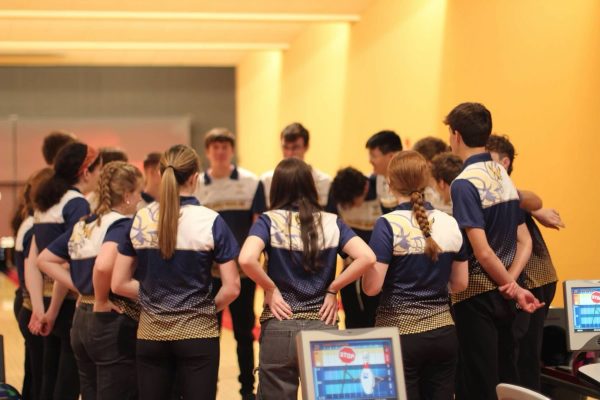A day in the life of a ski racer
Ski racing is a sport that not many people do or know about. Most of the time when people hear about it they ask, “Don’t you just have to go down the hill fast?” Although that is part of it, there is so much more to the sport and people participating in it.
It all starts at 6 a.m. when a racer has to wake up and get ready. Many things are necessary for race day, ranging from a good pair of socks to at least two pairs of skis. Most of the time racers arrive at the mountain as the sun is just rising in order to have the proper amount of time to get prepared.
The first and most boring step of preparation is called “slipping the hill”. This is when racers get a chance to see what the course is all about. Immediately after that, the races begin.
The first race of the day is always the most difficult for a racer. They tend to still be groggy and have yet to get into the groove of things, and most importantly, this race sets the racers’ standings for the rest of the day. The first two races are combined for time; therefore, if a racer messes up on one or another, it ruins everything.
The first day is extra difficult as well because it can be very long. There are three races in one day, and between the second and third races, the course is reset. This means that racers must slip again and learn a whole new course for just a single run.
Though the first day can be tiring, Lilah Takes, ‘23, says its her favorite day and event. She said, “I just like the opportunity to ski on different hills in different places in general, and I like Giant Slalom the most because then I can really gain speed and control.”
The second day follows almost the same routine, but racers will be running slalom. This means the gates, which racers go around, are a lot closer together and the combinations, which are pretty much obstacles, are a lot more difficult.
Even though the course may be more difficult, some find the challenge fun. Ella Bonnet, ‘23, who has been racing for nine years now, prefers the event of slalom over giant slalom. She says, “I like that you are always being active and doing something throughout the course. It really makes you work for the finish.”
This event in ski racing is both mentally and physically draining. The course is much longer, makes racers’ legs burn, and when racers’ fall, there is an opportunity to hike the hill to return to a missed gate. On the first day, if racers fall, the gates are too far apart so they have to ski away. Whereas if racers fall on day two, they have to hike, which makes racers even more tired. It is also mentally draining since the racers cannot give up; however, some racers have had to hike but are so mentally strong and willing they still place in the top three.
Kate Hingtgen, ‘22, has been skiing since sixth grade and prefers slalom. “I get the opportunity to cross block and hit the gates, and I am just overall better at it,” she said.
So yes, at the end of the day, whoever goes down the hill the quickest does win, but a lot of skill is required to be successful. Race days are cold and draining but are incredibly fun. The people and atmosphere are amazing, and when racers win, they know that it was all their own hard work. Lilah, Ella, and Kate all said, “Our favorite part of skiing is the people we are surrounded by and how different yet fun the sport can be.”

Claire Walker is a second-year staff member of the Gleaner. She is involved in volleyball and tennis, but enjoys skiing in her free time. Claires favorite...







